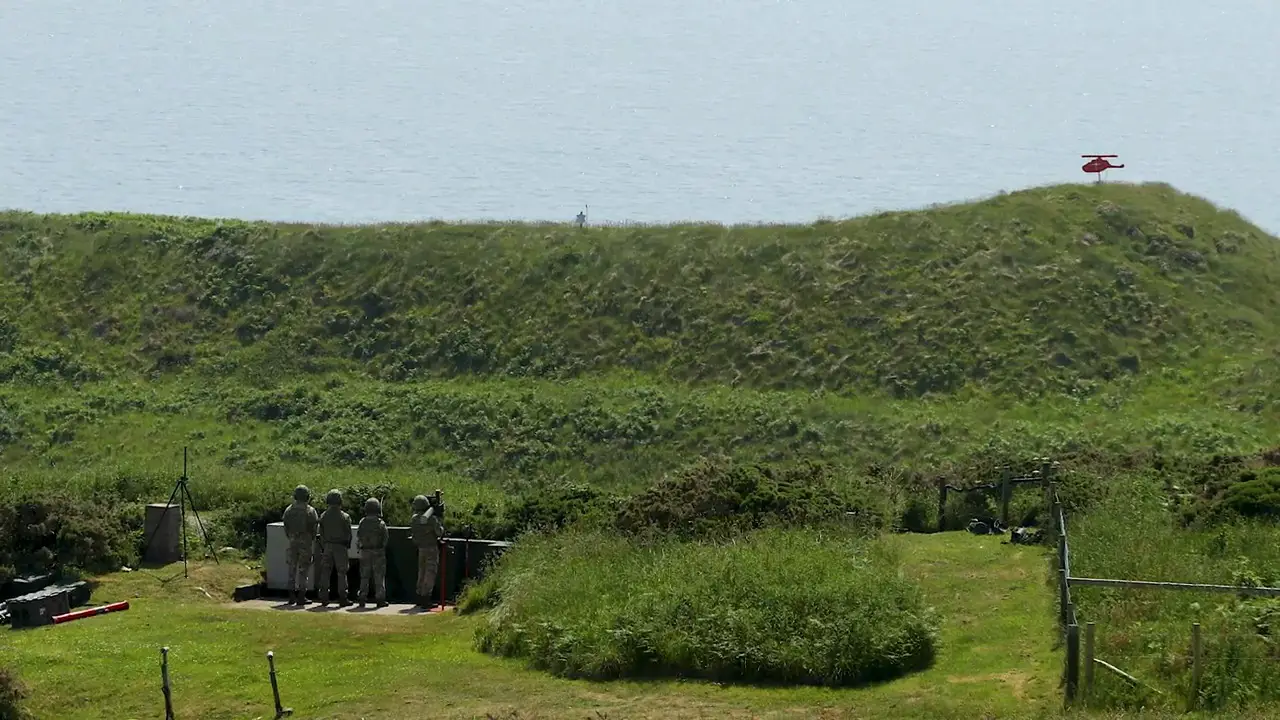Royal Marines Commando heavy weapon specialists tested their ability to down enemy air power by hitting the Welsh ranges – and hitting drone targets thrown at them. It’s operated by Air Defence Troop – one of the commandos’ three specialist heavy weapons teams (the remaining two are anti-tank and mortars) – who headed to Manorbier Range near Tenby to test the missiles… and test their aim. Months of planning was completed before the Plymouth-based marines rocked up in south-west Wales. Each operator has to complete hundreds of shots on a simulator to prove that they are ready to fire a live missile by repeatedly tracking a target drone with a laser. The Starstreak High Velocity Missile is the Corps’ last line of defence against jets and helicopters – a lightweight, portable weapon which can be fired over the shoulder or from a specialist launcher. Starstreak has been in service with the British Armed Forces since 1997.

The Starstreak HVM (High Velocity Missile) is a British short range man-portable air-defence system (MANPADS) manufactured by Thales Air Defence (formerly Shorts Missile Systems), in Belfast. In 2012 Thales rebranded the system under the ForceSHIELD banner.[ After launch, the missile accelerates to more than Mach 4, making it the fastest short-range surface-to-air missile in the world. It then launches three laser beam riding submunitions, increasing the likelihood of a successful hit on the target. The HVM missile has a first-stage motor which throws it forward from the launcher after which the second stage known as the “bus” kicks in and boosts the missile to over 2,000mph – more than three times the speed of sound, or faster than a rifle bullet.

On impact with the target, a delayed action fuze is triggered. This gives time for the projectile to penetrate the target before the explosive warhead detonates. The tungsten housing is designed to fragment and produce maximum damage inside the target. The dart housing is made from a tungsten alloy. The darts are each 396 millimetres (15.6 in) long with a diameter of 22 millimetres (0.87 in) and weigh about 900 grams (32 oz). Around half the weight of each dart, approximately 450 g (16 oz), is its explosive charge, detonated by a delayed-action, impact activated fuze.[6] Each dart consists of a rotating fore-body with two canard fins attached to a non-rotating rear assembly which has four fins. The rear assembly of each dart also houses the electronics that guide the missile, including a rearwards facing sensor.

The Starstreak HVM (High Velocity Missile) has a number of advantages over infrared homing guided, radar homing guided, and radio command guidance MCLOS/SACLOS (e.g. Blowpipe or Javelin) missiles:
It cannot be jammed by infrared countermeasures or radar/radio countermeasures.
It cannot be suppressed with anti-radar missiles.
Its high speed makes it more likely to be able to intercept a fast moving aircraft.
Three submunitions increase the size of the lethal area, increasing the probability that the target will be hit by at least one submunition.
Its high speed reduces the amount of time for effective usage of any potential countermeasure, such as the beam manoeuvring or illuminating the guidance laser source with a dazzling battlefield laser.














